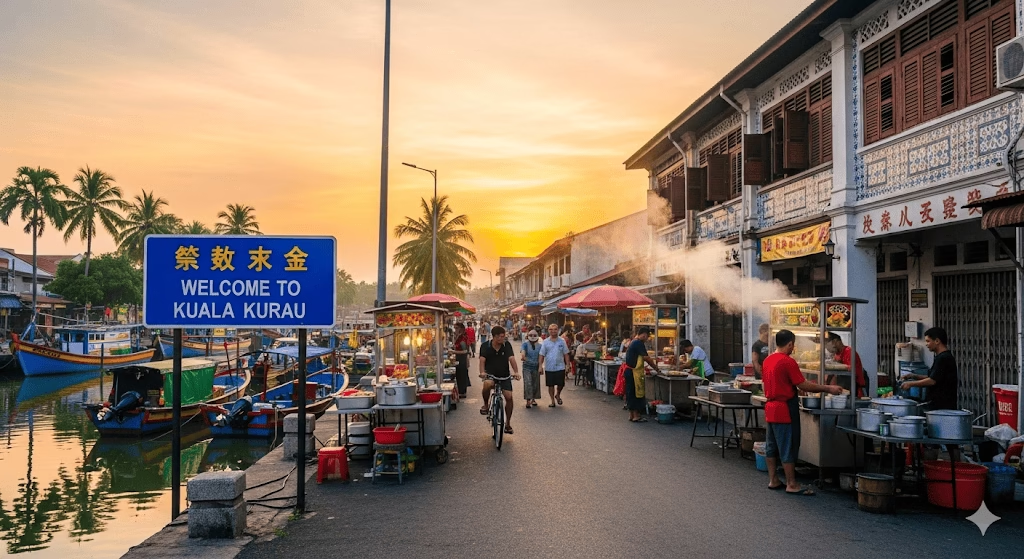Masjid Negara Kuala Lumpur – A Timeless Symbol of Malaysia’s Independence and Faith

Introduction
Masjid Negara (The National Mosque of Malaysia) is one of Kuala Lumpur’s most important landmarks and a proud symbol of Malaysia’s independence, unity, and Islamic identity. Nestled within the Perdana Botanical Gardens, this grand mosque reflects the country’s gratitude for peaceful independence and celebrates Malaysia’s multicultural harmony.
Built between 1963 and 1965, Masjid Negara stands as a monumental tribute to the nation’s freedom, designed to express the aspirations of a newly independent Malaysia through bold modern Islamic architecture.
Historical Background
The idea to build a national mosque was first proposed by the Federal Executive Council in 1957, just a month before Malaysia’s independence. Initially, the Chief Ministers of all eleven states suggested naming it after Tunku Abdul Rahman Putra Al-Haj, Malaysia’s first Prime Minister, in recognition of his leadership during independence.
However, Tunku graciously declined, suggesting instead the name Masjid Negara (National Mosque) — a symbol of unity, harmony, and gratitude to Allah for the country’s peaceful transition to sovereignty.
The mosque was constructed on the site of the Venning Road Brethren Gospel Hall, a church that had existed since 1922. Its construction was overseen by engineer Antony Morris, with design contributions from Howard Ashley, Hisham Albakri, and Baharuddin Kassim of the Public Works Department.
Architectural Features
Masjid Negara’s design is a masterpiece that blends modernism with Islamic aesthetics, representing both faith and progress.
Key architectural highlights include:
- 73-metre-high Minaret: A towering symbol of faith visible from afar.
- 16-Pointed Star Roof: The mosque’s main roof, inspired by an open umbrella — a symbol of protection and hospitality.
- Folded Concrete Plates: Innovative structural design allowing a large, open prayer hall without columns.
- Reflecting Pools and Fountains: Spread throughout the mosque’s gardens, enhancing its serenity and spiritual ambience.
Originally featuring a pink concrete roof, the mosque underwent major renovations in 1987, replacing it with blue and green tiles that beautifully complement the surrounding greenery.
Spiritual and Cultural Significance
Masjid Negara is not just a place of worship but also a national symbol of gratitude and peace. It stands for Malaysia’s unity across diverse cultures and religions while representing the nation’s respect for Islamic traditions.
Adjacent to the mosque lies the Makam Pahlawan (Heroes’ Mausoleum), a beautifully designed 7-pointed star structure housing the graves of prominent Malaysian Muslim leaders who contributed to the nation’s development.
Facilities and Capacity
Capacity: Accommodates up to 15,000 worshippers
Land Area: Covers approximately 13 acres (53,000 m²)
Facilities Include:
- Main prayer halls and ablution areas
- Reflecting pools and landscaped gardens
- Visitor information centre
- Guided tours and exhibitions for tourists
- Underground passageway to Kuala Lumpur Railway Station
Visiting Information
Location: Jalan Perdana, near Perdana Botanical Gardens, Kuala Lumpur
Nearest Landmarks: Kuala Lumpur Railway Station, Islamic Arts Museum Malaysia, National Museum of Malaysia
Dress Code: Modest attire required; robes and headscarves are provided for non-Muslim visitors.
Visiting Hours:
- Open daily except during prayer times for non-Muslim visitors
- Fridays reserved primarily for worshippers
Accessibility: Easily reachable by KTM Komuter, LRT, or taxis. The mosque is connected to the Kuala Lumpur Railway Station via an underground passage.
Nearby Attractions
- Islamic Arts Museum Malaysia – Explore Islamic art and manuscripts.
- Perdana Botanical Gardens – A lush urban oasis perfect for a post-visit stroll.
- National Museum of Malaysia – Discover Malaysia’s rich heritage.
- Kuala Lumpur Railway Station – An architectural gem from the colonial era.
Frequently Asked Questions (FAQ)
1. What makes Masjid Negara unique?
Its modern architecture, inspired by Islamic principles and tropical symbolism, makes it one of the most distinctive mosques in Southeast Asia.
2. Is Masjid Negara open to non-Muslims?
Yes, non-Muslims are welcome to visit outside prayer times, provided they follow the dress code.
3. How can I get to Masjid Negara?
Take the KTM Komuter or LRT to Kuala Lumpur Station, from which you can walk through an underground passage to reach the mosque.
4. What is the capacity of Masjid Negara?
The mosque can accommodate up to 15,000 worshippers during major prayers.
5. What is the Makam Pahlawan?
The Makam Pahlawan, located beside the mosque, is the burial site for Malaysia’s national heroes and Muslim leaders.
Conclusion
Masjid Negara stands as a testament to Malaysia’s national pride, faith, and unity. With its stunning modern architecture, historical depth, and serene gardens, it remains one of Kuala Lumpur’s most visited landmarks for worshippers and tourists alike.
Whether you’re drawn by its spiritual significance, architectural beauty, or historical symbolism, Masjid Negara continues to embody Malaysia’s enduring identity — peaceful, diverse, and faithful.














Comments are closed.